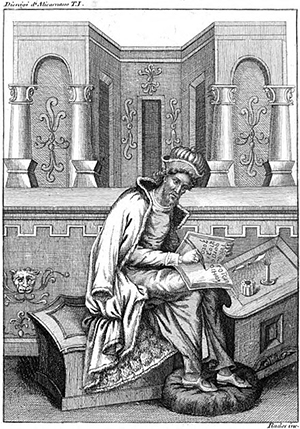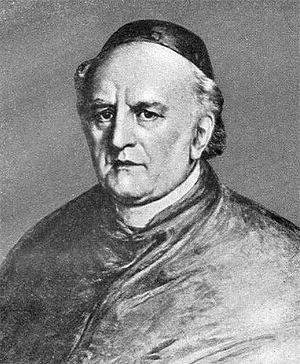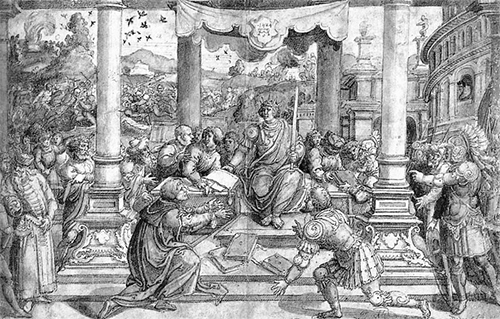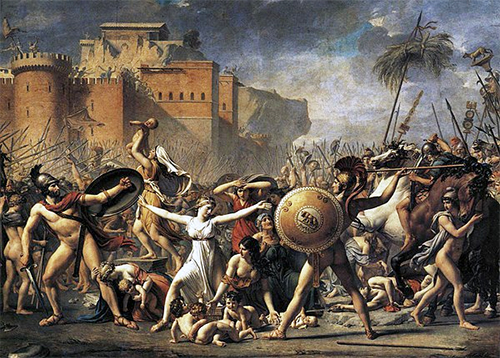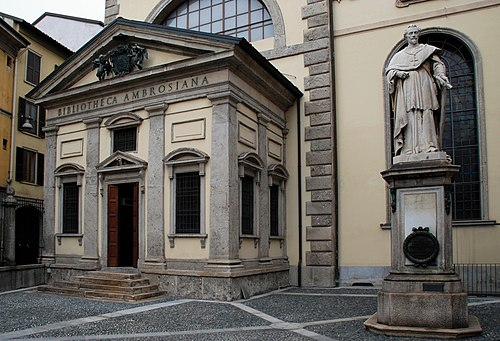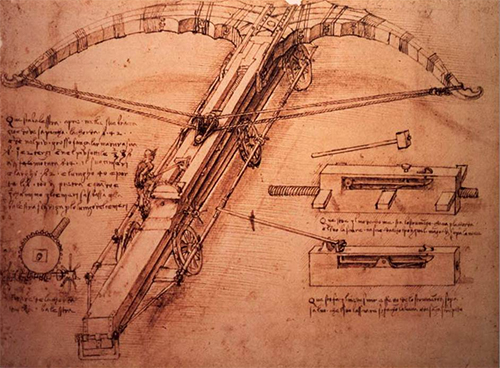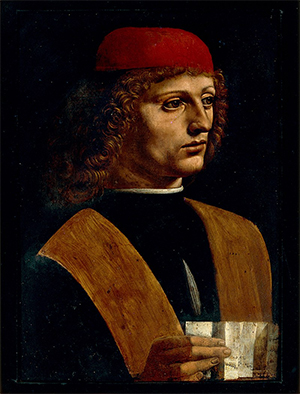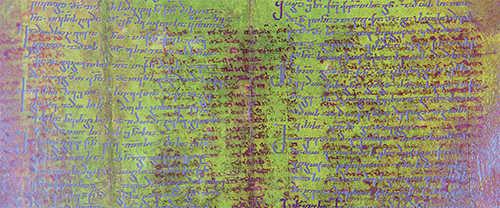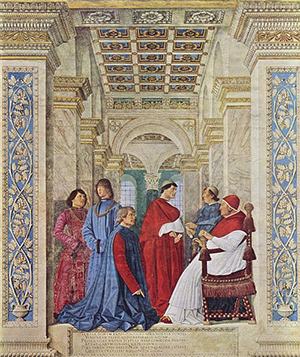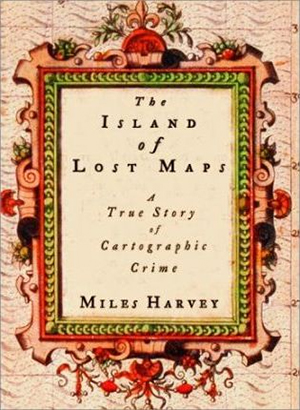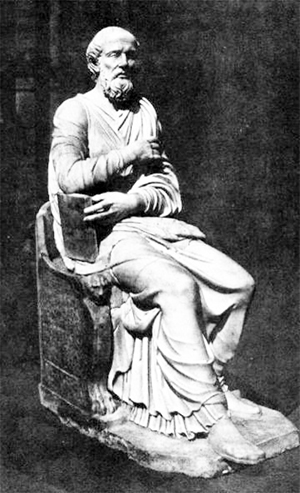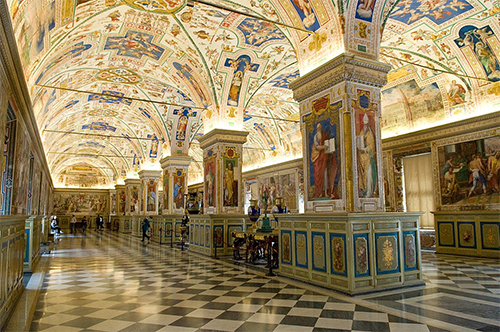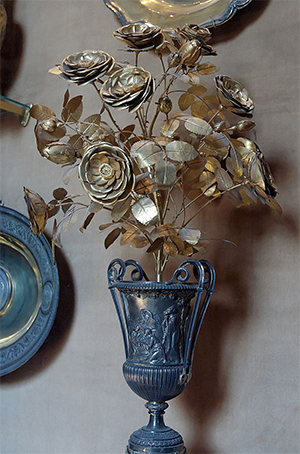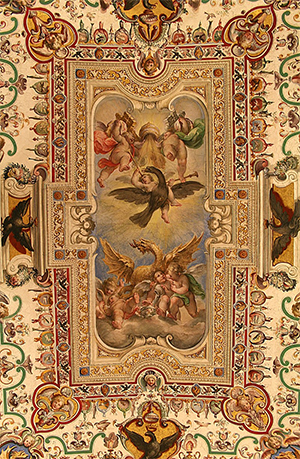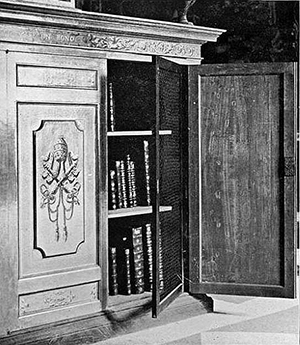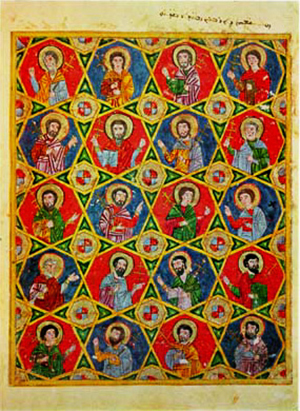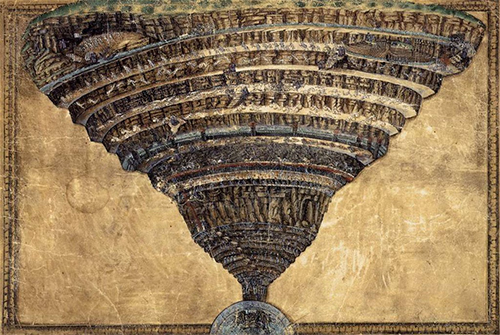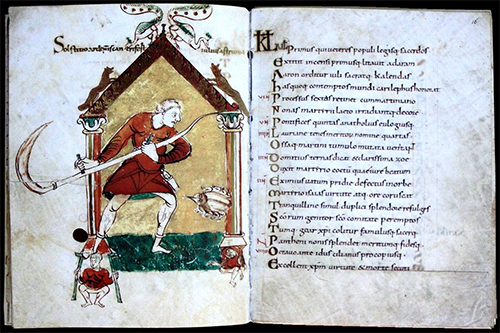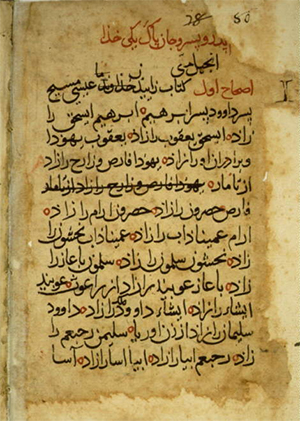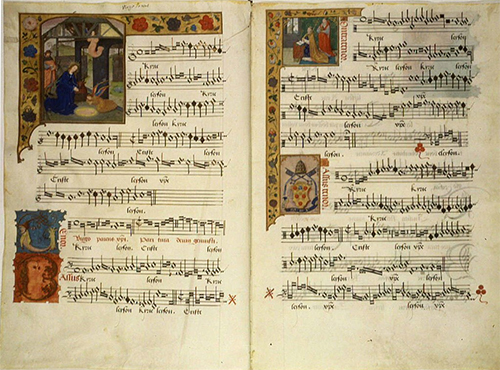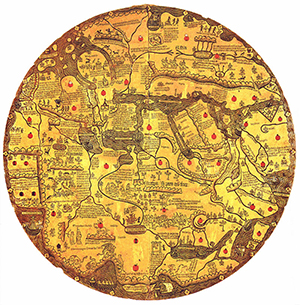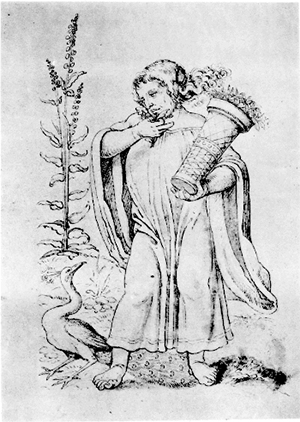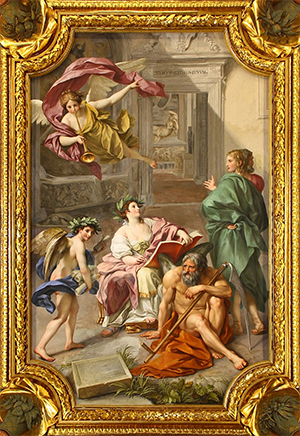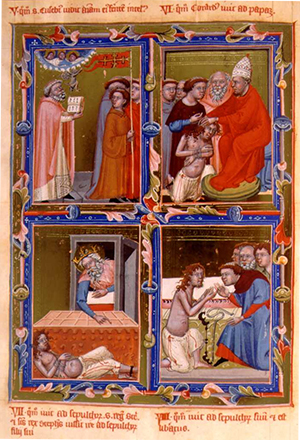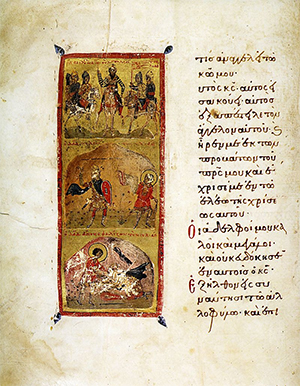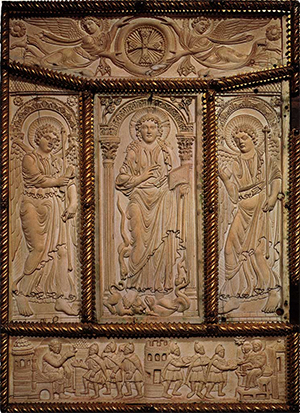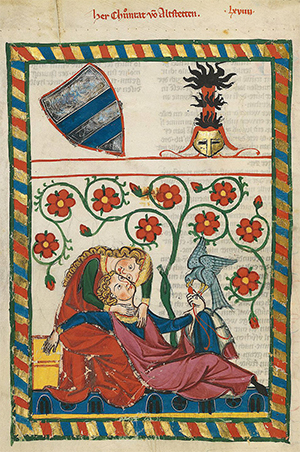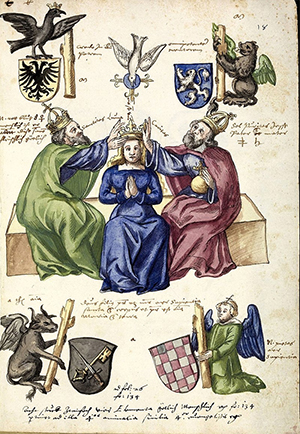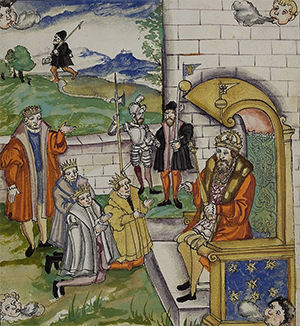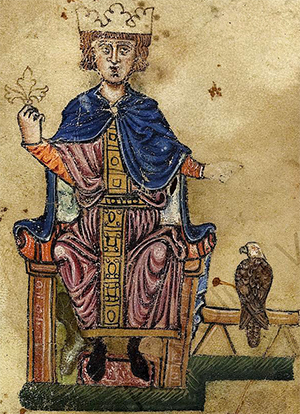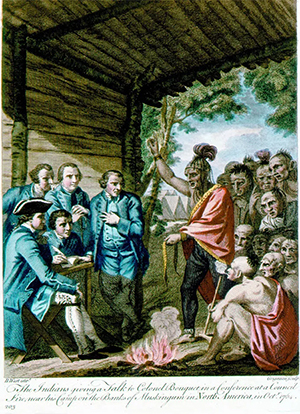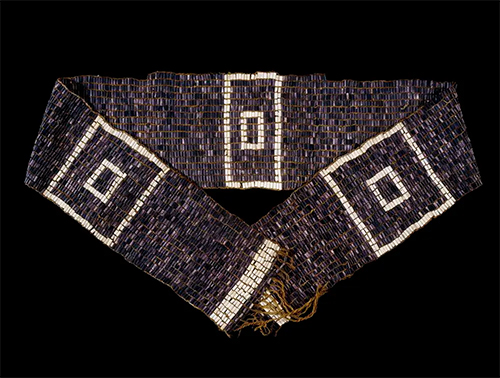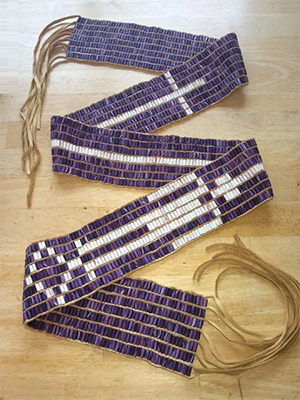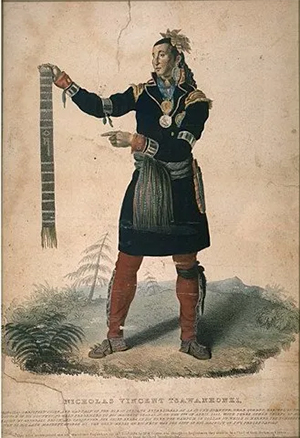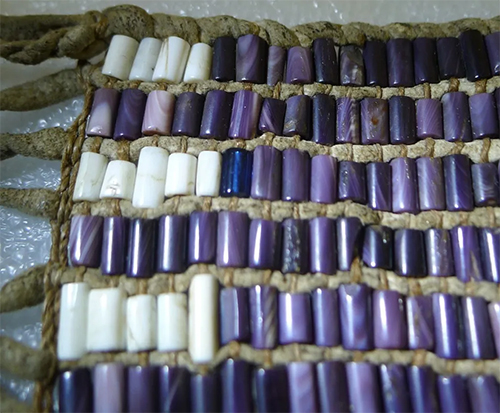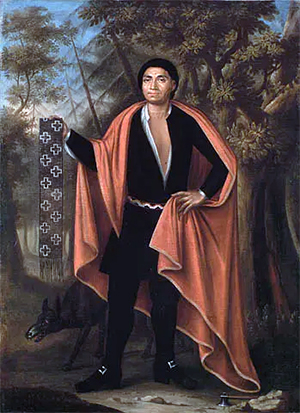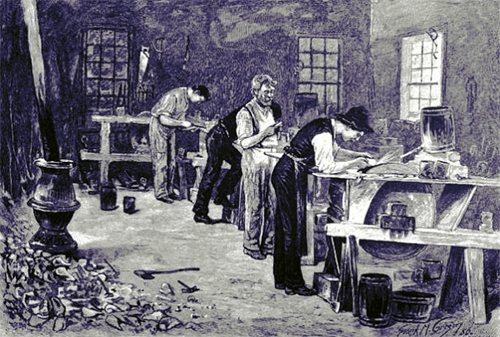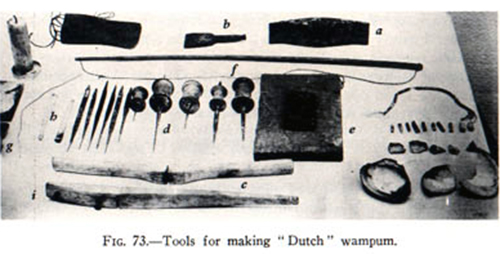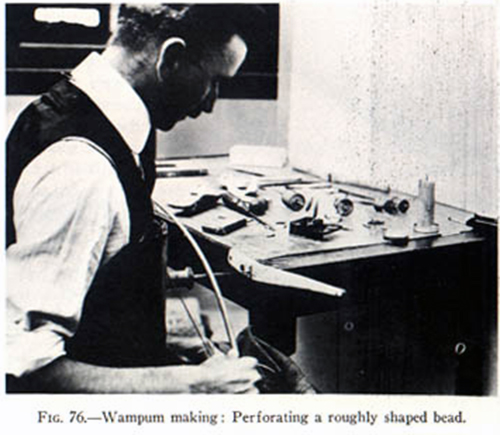Defining Authorship, Debating Authenticity: Problems of Authority from Classical Antiquity to the Renaissance
Edited by Roberta Berardi, Martina Filosa, and Davide Massimo
© 2021 Walter de Gruyter GmbH, Berlin/Boston
NOTICE: THIS WORK MAY BE PROTECTED BY COPYRIGHT
YOU ARE REQUIRED TO READ THE COPYRIGHT NOTICE AT THIS LINK BEFORE YOU READ THE FOLLOWING WORK, THAT IS AVAILABLE SOLELY FOR PRIVATE STUDY, SCHOLARSHIP OR RESEARCH PURSUANT TO 17 U.S.C. SECTION 107 AND 108. IN THE EVENT THAT THE LIBRARY DETERMINES THAT UNLAWFUL COPYING OF THIS WORK HAS OCCURRED, THE LIBRARY HAS THE RIGHT TO BLOCK THE I.P. ADDRESS AT WHICH THE UNLAWFUL COPYING APPEARED TO HAVE OCCURRED. THANK YOU FOR RESPECTING THE RIGHTS OF COPYRIGHT OWNERS.
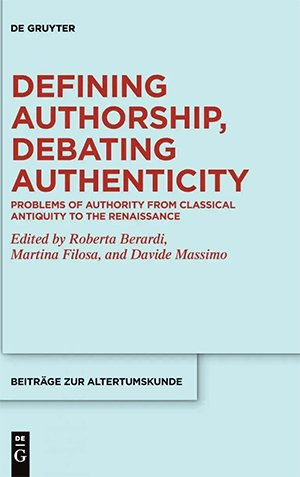
Contents:
• Roberta Berardi: Acknowledgements
• Roberta Berardi, Martina Filosa, Davide Massimo: Introduction
• 1 Auctor est aequivocum
• 2 Outline of the Volume
o 2.1 part 1: Attribution
o 2.2 Part 2: Authorship
o 2.3 Part 3: Authenticity
• Part 1: Attribution
• Elisa Nuria Merisio: Semonides or Simonides? A Century-Long Controversy over the Authorship of a Greek Elegiac Fragment
o 1 Introduction
o 2 A Century-Long Authorship Controversy
o 3 Style and Content as Attribution Criteria
o 4 P. Oxy. 59.3956: A Turning Point in the Authorship Controversy
o 5 Conclusions
• Linda Rocchi: Greek Readers' Digests (Again)? Some Lysianic [x] on P. Oxy. 31.2537
o 1 Introduction
o 2 The Papyrus
o 3 The Contents
o 4 Some Instructive Examples
o 5 Further Evidence: The Speeches For Euthynus against Nicias (II. 18-24 verso)
o 6 Conclusions
o 7 Appendix: Texts
• Davide Massimo: Defining a 'Pseudo-Plato' Epigrammatist
o 1 Introduction
o 2 The Authenticity of the Epigrams
o 3 The Anecdotes about Plato the poet
o 4 Diogenes Laertius and Pseudo-Aristippus
o 5 Apuleius
o 6 The Greek Anthology
o 7 Conclusions
• Pietro Zaccaria: Distinguishing Homonymous [Having the Same Name] Writers, Detecting Spurious Works: Demetrius of Magnesia's On Poets and Authors with the Same Name
o 1 Introduction
o 2 Demetrius' On Poets and Writers with the Same Name
o 3 Xenophon's Constitution of the Athenians and the Spartans (fr. 14 Mejer)
o 4 Epimenides' Letter to Solon (fr. 10 Mejer)
o 5 Dinarchus' Against Demosthenes (fr. 1 Mejer)
o 6 Conclusions
• Anna Dorotea Teofilo: 'On Sail-Flying Ships Did I Roam the Great Sea ..."
• Rosa Lorita: When the Author Is Not Identifiable
• Part 2: Authorship
• Sara De Martin: Theognis the Author, Traditional Wisdom, and Some Side Effects of Authority
o 1 Theognis Between 5th and 4th Century BC
o 2 Two Cases of Later Reception
o 3 Conclusions
o Federica Nicolardi: Beyond the Scribal Error
o Elena Bonollo: The 'Co-Authorial' Role of Ancient Pupils, Excerptores, and Copyists in the Genuinely Menandrean [x]
1 An Authorial Perspective on the Corpora: Their Ascription to the Authority of Menander and the Contribution of 'Co Authors'
2 From Menander's Comedies to the Collections of Monostichs: variae lectiones as Consequences of Re-Adaptation
3 Conclusions
o Nicola Reggiani: [x]! Book Format, Authority, and Authorship in Ancient Greek Medical Papyri
1 Introduction
2 Book Authority in Ancient Medicine
3 Authority in the 'Therapeutic Literature'
4 Conclusions
o Gianmario Cattaneo: Defensio Bessarionis: Giorgio Benigno Salviati and the Concept of Authorship in Cardinal Bessarion's Circle
1 Giorgio Benigno Salviati and the Plato-Aristotle Controversy in the Quattrocento
2 Giorgio Benigno Salviati, Domizio Calderini, Niccolo Perotti and Their Treatises in Defence of Cardinal Bessarion
3 Traces of the Defensio Bessarionis in Perotti's Refutatio
o Part 3: Authenticity
o Pietro Bertocchini: Can Virtue Be Taught?
1 Introduction
2 The Motif in the Socratics
3 The Motif in the Spurious and Dubious Dialogues
4 Conclusions
o Marco Donata: Reshaping Socrates' Authority in the Pseudoplatonica
1 Socrates in the Academy
2 Socratic Dialogues in the Academy
3 Setting Socrates in Motion: A Survey
4 Conclusions: Socratic Authority and Platonic Authorship
o Roberta Berardi: Letter 1 of Demosthenes and the Prayer to the Gods
1 The Chronology of the Letters
2 The 'Prayer to the Gods'
o Anna Mambelli: The Second Epistle of Peter: A Different Approach to Lexical Analysis
1 Classification of the Uncommon Terms of 2 Peter: Problems of Terminology and Methodology
2 Analysis of Rare Words Used in 2 Peter
3 The Style of 2 Peter
4 Conclusions
o Chiara Calvano: Forged Inscriptions in Early Epigraphic Corpora
1 The Intellectual Context: Expectations of an Epigraphic Corpus in the 16th Century
2 The Genesis of the Gruterian Corpus
3 The spuriae ac supposititiae
4 The Sources of the spuriae
5 The Gruter-CIL Concordances: Proposals for Integration
6 Conclusions
o Bibliography
o Abbreviations
o Online Databases and Resources
o References
o List of contributors
o Index
o Defining Authorship, Debating Authenticity
o Beitrage zur Altertumskunde
o Herausgegeben von
o Susanne Daub, Michael Erler, Dorothee Gall, Ludwig Koenen und Clemens Zintzen
o Band 385
Acknowledgements
Conceiving, assembling, and editing this volume has constituted a long and challenging journey, one which started in October 2017, on the occasion of the 2nd International Prolepsis Conference Auctor est Aequivocum, and carried on until Spring 2020. This was a spring that most of us will remember as one of the peaks of a pandemic that forced most of the world to go into lockdawn. Despite the hard times and the difficulty in accessing resources (especially libraries), we did our best to commit to the goal of finishing our work on this book, for which we deeply thank our authors, who have always been receptive to our requests. Furthermore, we would like to thank our peer-reviewers, Luciano Bossina, Laura Carnevale, Guglielmo Cavallo, Daniela Colomo, Antonio Felle, Tristano Gargiulo, Valentina Garulli, Margherita Losacco, Massimo Magnani, Roberta Marchionni, Maria Chiara Martinelli, Rosa Otranto, Massimo Pinto, Claudio Schiano, for their invaluable help. Composing this volume in English has not been an easy choice, but was done with the aim of making it more accessible to the international scholarly community, while remaining faithful to the international nature of the original conference, which benefitted from the attendance and papers of many international graduate students and early career researchers. We are deeply grateful to the proof-readers who helped to significantly improve parts of the manuscript with great professionalism and availability, namely Marcus Chin, Thomas Coward, and the others who have been acknowledged in single chapters. We would also like to thank the staff at De Gruyter for their continuous assistance at such a difficult time, and, especially in this regard, Martin Hallmannsecker and Simone Hausmann. We are grateful also to Gregory Hutchinson and Claudia Sode for their support and encouragement. On a more personal note, we would also like to thank the loved ones who continuously supported us in our work: Alessio, Heidi, Jenicek, Lidia, Mesi, as well as all of our respective families. Finally, a special thanks goes to the other members of the Cultural Association Prolepsis for organizing the conference from which this volume originates, and to all the speakers who contributed to making it a precious moment for sharing knowledge and research on the themes of authorship and authenticity. In particular, we owe an immense debt of gratitude to Luisa Fizzarotti, who has provided constant impetus to the intellectual project underpinning this book, and participated keenly in the early stages of its assemblage.
Introduction
by Roberta Berardi, Martina Filosa, Davide Massimo
En attendant, etudions les choses qui ne sont plus. Il est necessaire de les connaitre, ne fut-ce que pour les eviter. Les contrefacons du passe prennent de faux noms et s'appellent volontiers l'avenir. [GT: In the meantime, let us study the things that are no more. It is necessary to know, if only to avoid them. Forgeries of the past take false names and willingly call themselves the future.] -- (Victor Hugo, Les Miserables)
1 Auctor est aequivocum [GT: The author is equivocal]
The present volume further examines the themes studied in BzA 375, On the Track of the Books,1 as part of a project of coordinated conferences organized by the Cultural Association Prolepsis. Book circulation, one of the main topics of On the Track of the Books and the colloquium from which it originated, has often been the only way in which certain books have survived, where these were lost in their original place of production, and later re-discovered elsewhere -- far away, even -- wherever book trade took them. The second Prolepsis' International Conference, Auctor est Aequivocum: Authenticity, Authority, and Authorship from the Classical Antiquity to the Middle Ages (Bari, October 26-27, 2017), has delved further into the subject and, among other topics, focussed on texts which have survived to our day only because of their erroneous, but in the end fortunate, misattribution to a 'more important' author. Authorship and authenticity have indeed played crucial roles in the survival and persistence of literary and historical works that would otherwise have been regarded only as works of 'minor' significance. The survival and circulation of books, and the dynamics governing these processes, hence form a fil rouge [GT: Red string] uniting the present collection with BzA 375, On the Track of the Books.
The title of the conference from which this volume derives is a quotation by Honorius of Autun, a 12th-century Christian theologian, who declares in his Expositio in Cantica Canticorum (prol., PL 172, 348) that 'Auctor est aequivocum', thereby underlining the ambiguity of the term 'auctor'. This quotation presents a useful starting point for discussion of the vast number of issues arising from the concepts of authority, authorship, and authenticity. and of the problems that relate to their -- often controversial -- definitions. The contributions in the present volume address a number of these themes through studies focussed on particular aspects: the problem of homonymous (or near-homonymous) authors, the role of authorial voices, the presence of spuria in the literary corpora of ancient authors (Plato, above all), the difficulties posed by anonymity, and, finally, the challenges posed by deliberate forgery, ancient and modern. Forgery happened in literature, but not exclusively so; when one considers epigraphical forgeries and the problems of authenticity and authorship associated with these, for example, it is necessary to take into account not only the text, but the physical monument bearing the text as well. These problems are not new, and neither is reflection on them. Since antiquity, scholars have thought about authenticity and authorship: establishing the authenticity of texts was, indeed, one of the principle tasks of the industrious philologists at Alexandria. Moreover, doubts about the attribution of certain works remained a crucial topic in ancient, Late-antique and Mediaeval scholarship, as shown for instance by the many occurrences of the expression [x], 'if genuine', in the works of the major lexicographical works of these periods, and indeed later on, too. Debates surrounding authenticity have not found their conclusion, but rather only further points of departure, in the modern 'obsession' for unveiling forgeries (epistolary [letter] forgeries, above all), of which Richard Bentley's life and scholarly activity represents but the tip of the iceberg. On the whole, the inherent ambiguity of literary authorship will never cease to be a part of reflection on literature of all time and genres -- one thinks of the never-ending debate of authorship in Shakespeare, to give just one illustrious example -- but it is a fact that this reflection is true in the present time more than ever. Moreover, misattribution may itself originate in a learned and literary act, and is worth studying for that reason. A clumsy reader might recall the beautiful-sounding famous line of Augustine on love, 'Amo, volo ut sis.' [I love you: I want you to be.] But Augustine actually never wrote anything of the sort: it was in fact Martin Heiddeger, writing a letter to his beloved pupil Hannah Arendt,2 who attributed these words to the Christian philosopher, and made them memorable, by conferring on them the remarkable authority of Augustine. Was this a fraud, a forgery, or a trick of the memory or ego?
'Qu'est-ce qu'un auteur?' was Michel Foucault's question in an article of 1969.3 where he questioned the very necessity of identifying an author in modern literature, in a pronouncement not too different in tone from that of Roland Barthes, who a year before provocatively had claimed the death of the author.4
We are aware that what we offer in this volume is just a small specimen of the many topics encompassed by a study of authenticity and authorship in antiquity; among others not coming under its purvey one might name, for instance, the complications arising from the difference between oral and written traditions, ancient forms of intellectual property, the role of scribes,5 or the problem of textual and editorial variants: these are all issues which have been, however, already treated at length in the past by authorities on these specific issues. This is why this book is conscious to place itself within a long, but continuously lively, tradition of studies on the subject.
A few crucial titles have been key within this tradition. Landmark studies are constituted by the works of W. Speyer and N. Brox on pseudepigraphical literature.6 The field was then explored by several Italian scholars, and in this context it is worth mentioning the volume edited by F. Roscalla, L'autore e l'opera,7 in which the contribution by D. Lanza (11-19), in particular, bearing the same title, provides a theoretical framework (taking into account anonymity, pseudepigraphy, transmission, and attribution) for the other case studies in that volume. This need for a theoretical framework also emerged strongly from F. Condello's review of Roscalla's volume.8 Beginning with Foucault's provocative question, Condello, on the basis of the premises underpinning Lanza's introductory essay to Roscalla's volume, discusses the identity and role of 'the author'.9 More recently, two volumes edited by J. Martfnez10 have dealt with the theme of fakes and forgeries, acknowledging the changed attitude towards this type of literature: scholarly focus has shifted from concern with problems of textual authenticity, and hence with isolating fakes and condemning forgers, to an interest in the cultural historical contexts and dynamics of textual production from which they emerged.
The study of authenticity, authorship, and literary authority has become a broad and diverse field encompassing subjects of wide-ranging time periods and themes; the lively scholarly attention it continues to attract is reflected in the ongoing and burgeoning activity of conferences and publications. In the so-called era of 'fake news' -- perhaps a misleading label -- and therefore the era of 'fake literature', when an erroneous attribution and the click of a mouse are enough to misdirect thousands of readers as to the authorship of a statement or even of an entire poem, a reflection on the blurring borders between non-authenticity and mistaken authorship needs necessarily to start from the Classical and Mediaeval worlds -- worlds which often had no more effective technology for defending the authority of a writer than a mere seal, a [x].11 It is in light of this contemporary concern around literary authenticity, and the long tradition of studying it, that this volume hopes to make further contributions to the wide-ranging debates on ancient authenticity and authorship.
2 Outline of the Volume
The book is divided into three sections: 'Attribution', 'Authorship', and 'Authenticity'. The chapters within each section broadly follow the chronological order of their subject-matter, although the complexity of pseudepigraphical literature, of course, prevents clear-cut chronological specificity, and many chapters necessarily deal with material stretching over several centuries. Anonymous texts, moreover, often elude sound dating. For these same reasons, the three sections have been structured primarily on thematic lines, even if this has inevitably resulted in overlapping content.
2.1 Part 1: Attribution
The first section, 'Attribution', deals with the process of ascribing a particular work to a particular author, and the reasons for doing so, from ancient to modern times: debates about ascription can be detected already in antiquity, sometimes begin to emerge only later, and in some cases continues to puzzle scholars to this day.
'Semonides or Simonides? The century-long controversy over the attribution of a Greek elegiac fragment' is Elisa Nurla Merisio's (La Sapienza-University of Rome) starting point for deeper reflection on authorship and the attribution of authorship in Archaic Greek fragmentary lyric poetry.
The paper by Linda Rocchi (University of Edinburgh) deals with the intriguing case of P. Oxy. 31.2537 (2nd/3rd century AD), a papyrus codex containing 22 lysianic [x]. In her paper, she argues that this papyrus might have been a sort of annotated catalogue of all available Lysianic speeches -- regardless of their authenticity -- and may therefore be regarded as a snapshot of the Lysianic corpus as it was known to X orat. 836a and Phot. Bibl. 262, 488b; namely, at the beginning of its formation.
Davide Massimo's (University of Oxford) paper investigates the viability of applying the label 'pseudo-Plato' to a series of epigrams variously ascribed to the philosopher Plato in ancient times, and which are now generally believed to be spurious. Focusing on the sub-group of erotic epigrams, the paper analyzes the various factors which influenced how the corpus has been slowly shaped over the centuries, and the misunderstandings, erroneous readings, and possible forgeries that have led to the ascription of these epigrams to Plato.
The aim of Pietro Zaccaria's (KU Leuven) paper is to determine the criteria used by ancient textual critics, as outlined in the lost work of Demetrius of Magnesia -- a 1st-century BC scholar, who authored a pinacographical and biographical work entitled On Poets and Writers with the Same Name -- for distinguishing homonymous writers and detecting spurious works, as well as his method of detecting pseudepigraphical works.
Latin metrical inscriptions, their authors as well as the literary works quoted in them form the core of Anna Dorotea Teofilo's (Independent Researcher) paper. She closely analyses the epitaph of an anonymous merchant found in Brundisium, Apulia [CIL IX 60 = CLE 1533] and outlines a profile of its remarkably skilled and competent -- albeit anonymous -- author.
Rosa Lorita (Independent Researcher) shows in her paper the importance of identifying composers of epigraphic texts -- especially when these relate to the government of the Roman Empire. She does so by thoroughly examining the so-called Volcei land-register [CIL X 407], a fragmentary list of properties on stone.
2.2 Part 2: Authorship
The second section. 'Authorship', explores the conceptual boundaries of the notion of authorship and the role that figures such as pupils, collaborators and scribes play in many different texts -- a role that is very often more difficult to trace than that of the original 'author' itself.
The riddle of the Theognidea is the focus of Sara De Martin's (King's College London) paper. By analyzing Theognis' place in the literary culture of the 4th century BC, as well as the reception of the Sylloge Theognidea in the imperial and Byzantine periods, the author underscores the benefits of the diachronic reception-based approach to Theognis and the Theognidean corpus, and looks at the Theognidean text as a repository for traditional wisdom.
Federica Nicolardi (University of Naples 'Federico II') explores the problem of authorship within the library of the Villa dei Papiri at Herculaneum. A detailed analysis of P. Herc. 1427, which contains the inner portion (the so-called midollo) of Philodemus' On Rhetoric Book 1, leads her to a reconstruction of the history of this text. The formal aspects of this papyrus would suggest that it be included among the definitive copies preserved in the Villa; however, the much-discussed term [x] can be read in its subscriptio, as in the subscriptiones to other rolls, which would suggest it was a provisional copy.
The collection of Menandrian maxims, the Menandri Sententiae, are at the core of Elena Bonollo's (University of Udine) paper. The author aims to shed light on the interpretation of the variae lectiones characterizing the maxims that have been differentiated from their original texts, which had traditionally been all gathered under the name of the much-appreciated comic poet Menander.
Book format, authority and authorship in so-called therapeutic (medical) literature are the focus of Nicola Reggiani's (University of Parma) research. Through the investigation of medical papyri, ostraca, and parchment 'notebooks', the author analyses the concepts of authority and authorship in relation to different text-bearing objects.
Gianmario Cattaneo's (University of Turin) contribution identifies some of the authors of the Refutatio deliramentorum Georgii Trapezuntii Cretensis, a treatise attributed to Niccolo Perotti, a member of the literary circle of Cardinal Bessarion, whose famous treatise In calumniatorem Platonis was the product of a collection of authors. With the aid of other texts and epistles, Cattaneo shows clearly that the Refutatio belongs to Bessarion's 'familia', and also demonstrates the extent to which the concepts of author and authorship were blurred within the Academia Bessarionis.
2.3 Part 3: Authenticity
The third section, 'Authenticity', deals with the thorny issue of the authenticity of texts or portions of texts, and problems associated with spurious texts and forgeries.
Pietro Bertocchini (University of Padua) studies the so-called pseudo-Platonic dialogues, trying to find -- despite their heterogeneity -- potential common threads running through them. He identifies one of these commonalities in the motif-like interest in the possibility of acquiring virtue (by birth, by learning, by training or by other means) and explores the different ways in which pseudo-Platonic or spuriously Platonic dialogues deal with this highly debated Socratic theme.
Socratic authority and Platonic authorship are also the subject of Marco Donato's (Aix-Marseille University) work. The 'return to Socratism', as well as the imitatio Socratis promoted by the Academy from the last quarter of the 4th century BC, are to be sensed both in the school's work of exegesis, and in the collection of the corpus of Plato's Socratic dialogues. In order to investigate these topics, the author closely examines three pseudo-Platonic dialogues: Eryxias (or Erasistratus), Theages, and Clitophon.
Roberta Berardi (University of Oxford) investigates the much-discussed authenticity of the six epistles attributed to Demosthenes, with particular attention to the proemium to Letter 1. In order to do so, she examines the order in which the letters 1-4 (the ones explicitly composed during the exile of the orator) are preserved in the manuscript tradition, and investigates some similarities between the first introductory paragraph of Letter 1 and other proemia of Demosthenes, and also to the peculiar introductory letter to the collection of epistles attributed to Brutus.
The research of Anna Mambelli (FSCIRE Bologna/University of Strasbourg) explores pseudonymity, forgery, and pseudepigraphy within the New Testament. In her paper she analyzes the Second Epistle of Peter with a new methodological approach -- a text which was accepted into the canon of the New Testament late in the 4th century with greater hesitation than any other book, because many felt that Peter was not the original author of the work (e.g. EUs. Hist. Eccl. 3.25.3; 6.25.8).
Finally, Chiara Calvano's IIndependent Researcher) paper deals with epigraphic forgeries and the first attempts at their categorization, following increasingly rigorous epigraphic criticism in mid-16th century. The authors stresses, moreover, the importance of a new methodological approach in Jan Gruter's Corpus -- the first comprehensive publication to acknowledge the existence of epigraphic forgeries.
_______________
Notes:
1 Berardi et al. (2019).
2 The letter is dated to March 1925, and the attribution is explicit in Arendt (1963 3).
3 Foucault (1969).
4 Barthes (1967).
5 Very famous is the expression invented by Canfora: 'il copista come autore' ('the scribe as the author'), in Canfora (2002).
6 Speyer (1971) and Brox (1975).
7 Roscalla (2006).
8 Condello (2011). Excellent tools to study the topic of authenticity and authorship in antiquity from a theoretical point of view are also Ronconi (1955), Cerri (2000), D'Ippolito (2000), which discuss the terminology necessary for talking about these subjects, but also other crucial problems, such as the intentions of the author/forger in creating a pseudepigraphical work, and, further, the interesting problem of ancient and modern approaches to pseudepigraphical literature.
9 An interesting volume on the role of the 'author' is Marmodoro/Hill (2013).
10 Martinez (2012) and Martinez (2014).
11 It is difficult here not to mention the example of Galen, always very careful to claim the authorship of his own works, even to the point of composing a treatise entitled 'On my own books'.

